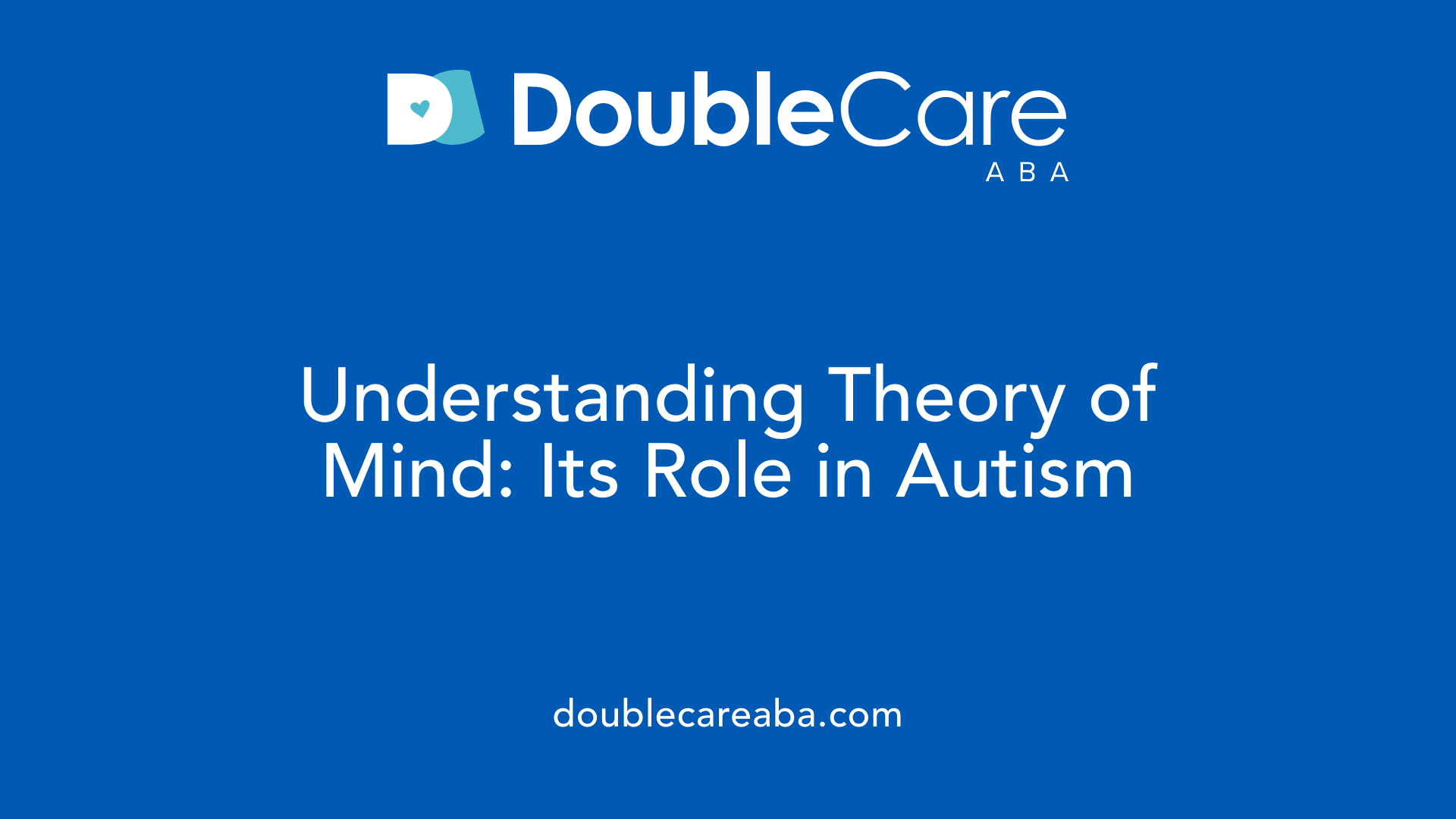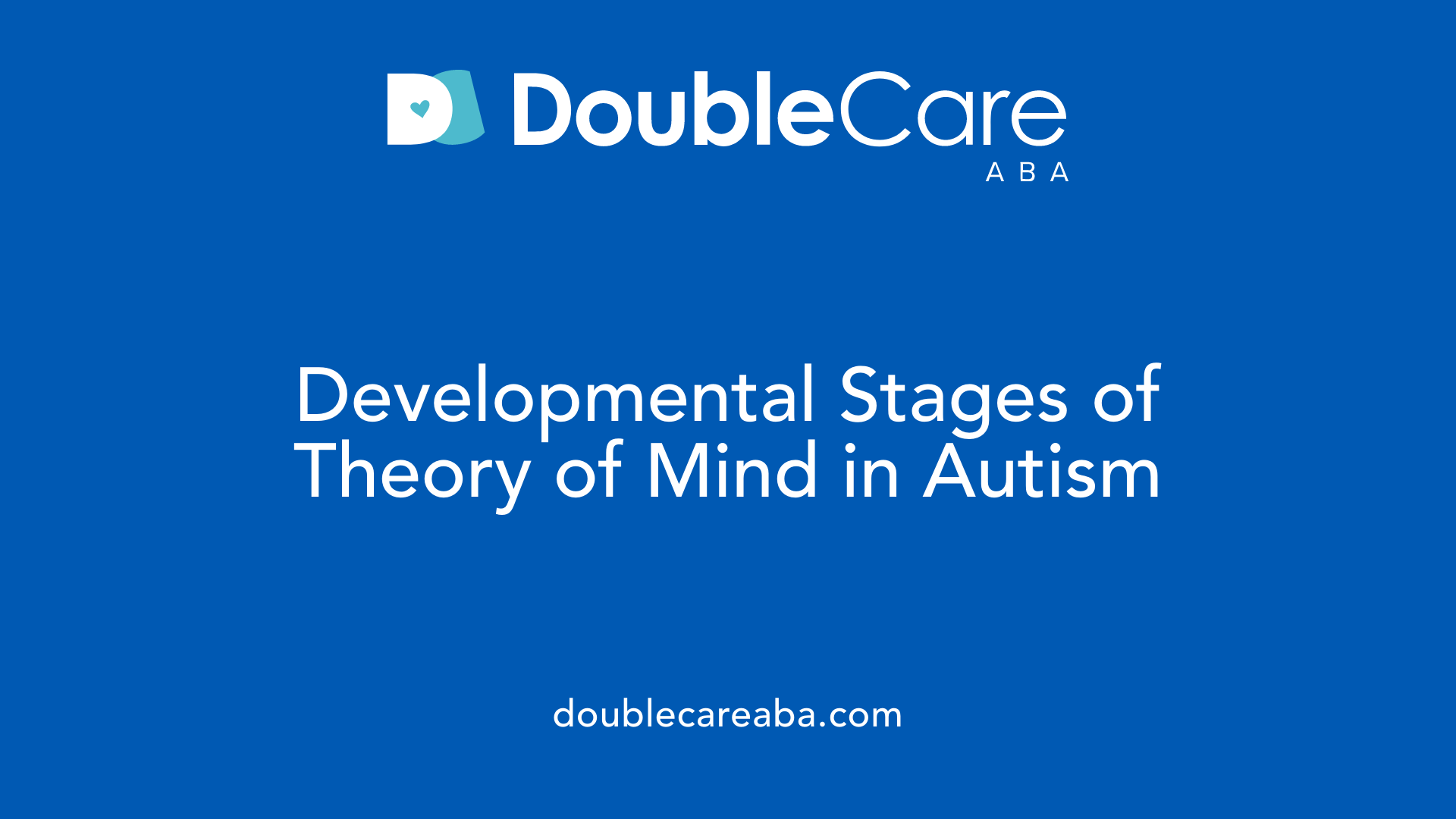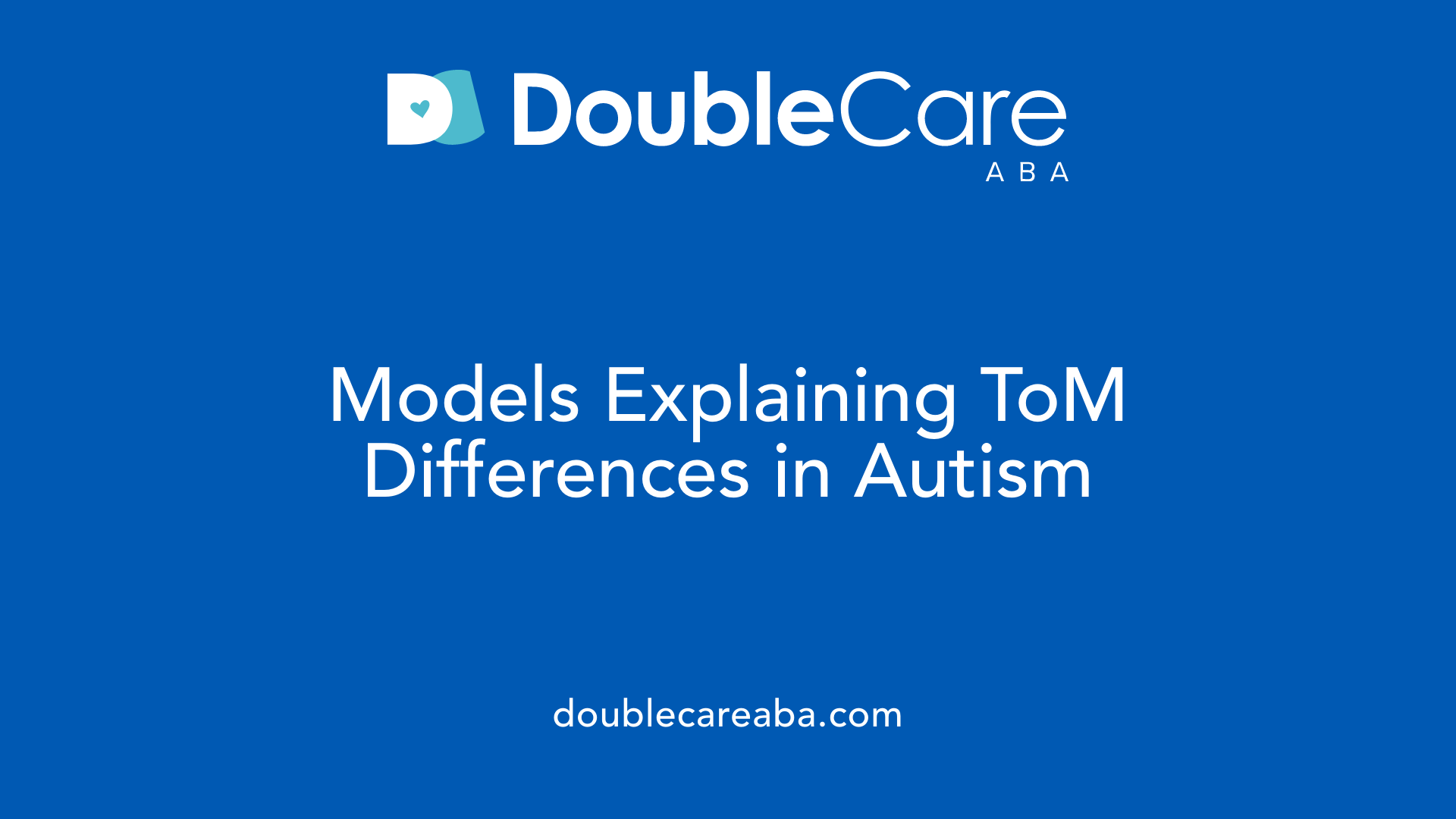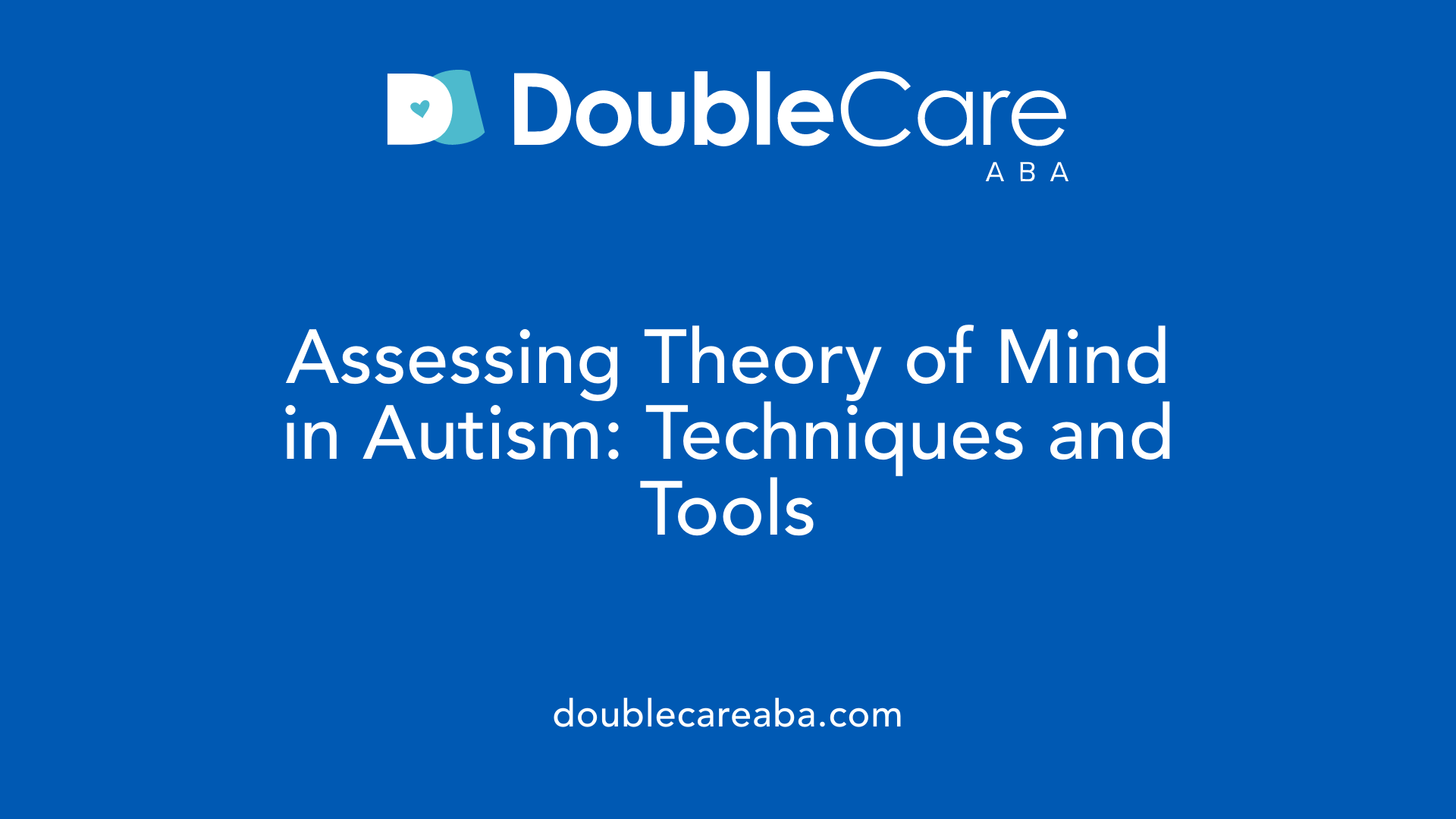Theory Of Mind Autism
Unraveling the Social Mind: Recent Insights into Theory of Mind and Autism

Understanding the Complexities of Social Cognition in Autism
Theory of Mind (ToM) is a fundamental aspect of human social interaction, involving the ability to comprehend and predict others' mental states such as beliefs, intentions, and emotions. In autism spectrum disorder (ASD), differences and delays in ToM development are widely recognized as key contributors to social communication challenges. This article explores the multifaceted nature of ToM, its development, assessment, and implications within autism, highlighting recent advancements and ongoing debates.
Defining Theory of Mind and Its Relevance to Autism

What is the Theory of Mind and how does it relate to autism?
The Theory of Mind (ToM) is a fundamental aspect of social cognition, involving the ability to understand and attribute mental states—such as beliefs, desires, intentions, and emotions—to oneself and others. This ability enables us to interpret, predict, and respond appropriately to the behaviors of others in social settings. Essentially, ToM allows us to recognize that other people have thoughts, feelings, and perspectives that may differ from our own.
In the context of autism, ToM has been a central concept in explaining some of the social communication challenges faced by individuals on the spectrum. Historically, research suggested that many autistic individuals display difficulties in developing and applying ToM skills, particularly in spontaneous or implicit mentalizing. For instance, children with autism may struggle with understanding that others can hold false beliefs or interpret body language and social cues accurately.
However, recent studies have shown a more nuanced picture. Many autistic individuals can pass explicit ToM tests, such as recognizing false beliefs when given direct instructions or specific cues. This indicates that their capacity to understand mental states may be intact in some situations but less accessible in spontaneous, everyday social interactions. These findings suggest that the core issue might not be a total absence of mentalizing ability but rather differences in how mental states are inferred or processed automatically versus when consciously reasoning.
Furthermore, contemporary perspectives, like the 'double empathy challenge', emphasize that social understanding is a reciprocal process and that communication difficulties are mutual, arising from differences in social styles, rather than solely from deficits within autistic individuals. This approach shifts the focus from viewing autism as a lack of empathy or mental state understanding to recognizing that diverse social cognition styles can coexist and be mutually comprehensible with appropriate context and effort.
Overall, ToM remains a vital concept in understanding autism. It highlights both the specific social cognitive skills that may develop differently and the importance of considering contextual and reciprocal factors influencing social interaction. Ongoing research continues to refine the picture, emphasizing that ToM in autism is complex, multidimensional, and influenced by various cognitive, developmental, and social factors.
Developmental Trajectories and Stages of ToM in Autism

How does Theory of Mind develop in individuals with autism, and what are the typical developmental stages?
The development of Theory of Mind (ToM) in individuals with autism follows a different trajectory compared to neurotypical children. Generally, children with autism experience delays and differences in acquiring ToM abilities, which can impact their social understanding and communication. While neurotypical children typically develop a basic understanding of mental states around ages 4 to 5, autistic children often show a delayed or atypical pattern.
In infants and very young children with autism, early precursors such as joint attention (the ability to share focus on an object or event) and emotional contact may be present but less consistent or less frequent. These foundational skills are essential for subsequent ToM development. As children grow, they begin to grasp that others have desires and emotions that differ from their own, but this understanding often develops more slowly in autistic children.
By preschool age, many autistic children can understand that others have desires and expressions of emotion, and some can pass explicit false-belief tasks—tests that measure understanding that others can hold beliefs that are incorrect or different from reality. However, their performance on more complex ToM tasks, like understanding knowledge access or interpreting subtle social cues, remains challenging.
Research indicates that the progression of ToM skills in autism can vary considerably among individuals and is influenced by multiple factors, including cognitive abilities, language development, and environmental exposure. Some autistic individuals demonstrate gradual improvements in explicit ToM skills with age and targeted interventions, but overall, the development tends to be more protracted and uneven.
Typical developmental stages in neurotypical children
In neurotypical children, ToM development generally proceeds through well-documented stages:
| Age | Developmental Milestone | Description |
|---|---|---|
| 1-2 years | Early social awareness | Recognize social cues, respond to emotional expressions, begin to point attention. |
| 2-3 years | Understanding desires | Recognize that others have desires that differ from their own. |
| 3-4 years | Recognize intentions | Understand that people have intentions and plans. |
| 4-5 years | False-belief understanding | Pass standard false-belief tests, grasp that others can hold beliefs that are incorrect. |
| 5+ years | Complex mental states | Comprehend sarcasm, irony, and complex beliefs. |
The normative development involves a gradual decrease in egocentric thinking and an increasing ability to consider others' perspectives.
Variability and progression of ToM skills in individuals with autism
In autism, this progression is often delayed or atypical. Some children may catch up in explicit ToM understanding during later childhood or adolescence, especially with targeted support, but many continue to face difficulties in spontaneous, real-world social interactions.
This variability is linked to differences in language skills, cognitive functioning, and socio-environmental factors. For example, higher language abilities are strongly correlated with better ToM performance ( De Villiers & De Villiers, 2014). Furthermore, some research suggests that the impairment lies not only in understanding others' mental states but also in applying this understanding spontaneously during social situations.
Impact of cognitive and language factors on ToM development
Cognitive skills, such as executive functioning—including working memory, cognitive flexibility, and inhibitory control—are essential for developing and demonstrating ToM abilities. Deficits in these areas often correlate with poorer performance on ToM tasks in autistic individuals.
Language development plays a crucial role in understanding mental states. Complex language knowledge, such as understanding embedded sentences and vocabulary related to mental states, facilitates ToM growth. Studies show a positive correlation between vocabulary size and ToM skills, implying that language can serve as a foundation for mental state understanding.
In summary, autism involves a developmental delay in ToM, characterized by slower progress and greater variability. While some autistic individuals develop explicit awareness of mental states similar to neurotypical peers, spontaneous, real-world application remains a challenge. These developmental differences underscore the importance of tailored interventions and support that consider individual cognitive and language profiles.
Empirical Findings and Challenges in ToM Research for Autism

What are common research findings regarding ToM deficits in autism?
Research consistently shows that people with autism spectrum disorder (ASD) tend to have notable difficulties with theory of mind (ToM). This means they often struggle to understand and interpret what others might be thinking, feeling, or intending. These challenges directly impact social interactions, making it harder to read emotions, grasp intentions, and demonstrate empathy.
One of the traditional measures of ToM is the false belief task, like the Sally-Anne test. Many children with autism do not pass this test until around the age of 11, indicating delays in developing the ability to understand that others can hold beliefs different from reality. Although many children with ASD eventually succeed, their progress varies widely.
Beyond explicit tasks, autistic individuals show mixed performance on emotion understanding tests. Some studies find they have difficulty recognizing emotions from facial expressions or tone of voice, especially when these involve complex or subtle cues. Challenges in pragmatic language—using language appropriately in social contexts—are also linked to ToM deficits.
Neurophysiological investigations have provided additional insights. Studies using neuroimaging reveal differences in brain regions typically involved in social cognition, such as the medial prefrontal cortex, temporoparietal junction, and superior temporal sulcus. These areas tend to activate less or differently in autistic people during ToM tasks.
Further, the mirror neuron system, thought to underpin the capacity to imitate and understand others' actions and intentions, may not activate as strongly in autistic individuals. While some argue that mirror system dysfunction contributes to ToM impairments, findings are mixed, with some individuals showing typical activation patterns.
Researchers are also exploring variability within autism. Not all autistic individuals demonstrate equal ToM impairment; some pass explicit tasks but struggle with spontaneous or implicit social understanding. Factors such as language skills, cognitive ability, and age can influence ToM performance. Thus, autism is becoming recognized as a spectrum with diverse social-cognitive profiles.
Recent advances involve developing more sensitive assessment tools, including implicit measures like gaze-following and response time tasks. These methods can detect subtle differences and better reflect real-life social understanding, which often depends on quick, automatic inferences rather than deliberate reasoning.
Overall, the evidence underscores that ToM deficits are a significant component of autism's social difficulties but are complex and heterogeneous. Ongoing research aims to unravel the neurocognitive underpinnings and improve tailored interventions.
| Aspect | Findings | Additional Notes |
|---|---|---|
| Performance on false belief tasks | Many children with ASD develop these skills late; some pass earlier or later | Developmental delays and individual differences |
| Emotion understanding | Difficulties in recognizing subtle expressions; variable across individuals | Linked to pragmatic language and executive functions |
| Neurophysiological insights | Reduced activation in social brain areas; inconsistent mirror neuron involvement | Brain imaging studies; aims to clarify neurobiological mechanisms |
| Variability within autism | Wide-ranging abilities, some pass explicit tests but struggle with real-time understanding | Emphasizes spectrum nature and individual differences |
This body of evidence highlights the importance of moving beyond a one-size-fits-all understanding of ToM in autism. Instead, recognizing and measuring individual differences, appreciating context-dependent social reasoning, and developing nuanced assessment tools are crucial for advancing both research and clinical practice.
Theoretical Frameworks and Models Explaining ToM in Autism

What theoretical accounts and models explain ToM differences in autism?
A variety of theories have been developed to understand how and why individuals with autism experience challenges with Theory of Mind (ToM). The classical ToM deficit hypothesis is foundational, proposing that impairments in understanding and attributing mental states—such as beliefs, desires, and intentions—are at the core of social difficulties in autism. This hypothesis gained prominence through research showing that autistic children often perform poorly on false belief tests, which are designed to assess the ability to infer others' mental states.
In addition to the ToM deficit model, cognitive accounts highlight the influence of executive functions—like working memory, inhibitory control, and cognitive flexibility—on ToM development. These executive processes are often underperforming in individuals with autism, making it harder to hold and manipulate mental state information, and to switch perspectives when needed.
Another influential framework is the Weak Central Coherence theory. It suggests that autistic individuals tend to focus excessively on local details rather than the global picture, which can impede the interpretation of social cues and mental states. Instead of holistic social understanding, their attention to details may lead to gaps in perceiving overall context and social nuances.
Emerging models such as the 'Mind-space framework' offer a different perspective. This probabilistic, trait-based approach conceptualizes ToM as a complex reasoning process situated within a multidimensional space. Rather than a binary ability to pass or fail tasks, the Mind-space model accounts for individual differences and the gradual development of mentalizing skills, recognizing that ToM involves nuanced, probabilistic inferences.
Recent social interaction theories, notably the 'double empathy challenge,' emphasize that social difficulties are reciprocal. This perspective argues that communication breakdowns are not solely due to deficits in autistic individuals but also involve mismatches in communication styles and mutual misunderstandings. It frames ToM as a bidirectional, socially constructed process, fostering a shift from viewing autism purely as an impairment to recognizing the importance of mutual understanding.
Overall, these diverse models provide a comprehensive understanding of ToM in autism. They highlight that cognitive, social, and contextual factors all contribute to the unique social profiles observed among autistic individuals, and that ToM is best understood as a spectrum of abilities influenced by multiple interrelated processes.
Assessment Techniques and Measures for ToM in Autism

How are ToM abilities assessed in autistic individuals?
Evaluating theory of mind (ToM) in autistic individuals involves a mix of traditional behavioral tests, advanced neuroimaging, and ecologically valid methods that mirror real-world social interactions.
Standardized tasks like the Sally-Anne test and the 'Reading the Mind in the Eyes' test remain foundational tools. The Sally-Anne task, for example, measures the understanding of false beliefs by asking individuals to identify where a character will look for an object based on their false belief. Typically developing children usually pass this test around age 4, whereas many children with autism show delays or difficulties. Meanwhile, the 'Reading the Mind in the Eyes' test asks participants to interpret complex emotions and mental states solely from images of the eye region, assessing emotion recognition and mental state inference.
Beyond these classic tools, there is a growing emphasis on ecologically valid measures that better capture ToM functioning in daily social contexts. Video-based assessments and interactive computer paradigms are increasingly used to observe how autistic individuals interpret social cues and mental states in more naturalistic scenarios. These approaches can demonstrate differences that traditional tests might overlook, highlighting the importance of context and dynamic social information.
Response time measures, which record how quickly someone makes mental state inferences, offer additional insights into automatic, spontaneous social cognition. Neuroimaging techniques such as functional magnetic resonance imaging (fMRI) also serve crucial roles by revealing brain activity patterns associated with ToM tasks. During neuroimaging, differences in activation within regions like the medial prefrontal cortex and temporoparietal junction are often observed in individuals with autism.
Despite the utility of these methods, challenges remain. Variability between individuals and testing conditions can limit the conclusiveness of results. Therefore, employing a multi-method approach—combining behavioral assessments, neuroimaging, and self- or informant reports—enhances reliability and offers a fuller picture of ToM abilities. This comprehensive strategy recognizes that no single test can capture the complex, multifaceted nature of social cognition in autism.
Implications of ToM for Social Functioning and Interventions in Autism
What are the implications of ToM understanding for social communication and behavior in autism?
Understanding the role of Theory of Mind (ToM) in autism has profound implications for how individuals on the spectrum navigate social interactions. Core deficits in ToM often hinder the ability to interpret others’ mental states, including their beliefs, intentions, emotions, and responses. This can manifest as difficulties in reading social cues such as facial expressions, tone of voice, or body language.
Such challenges can disrupt reciprocal interactions and empathy, making it hard for autistic individuals to predict or understand the behaviors of others. For example, children and adults with autism might struggle in conversations, often missing subtle cues or misattributing intentions, which hampers meaningful social engagement.
Research highlights that impairments in components like joint attention, understanding pretense, and counterfactual reasoning contribute directly to social skill deficits. Interventions aimed at enhancing these ToM-related skills have shown potential in improving specific areas like emotion recognition and perspective-taking.
However, studies indicate that gains from ToM training often do not extend broadly across social behaviors or sustain over long periods. This suggests that while understanding ToM deficits is critical for tailored assessment and intervention, it is also essential to consider individual differences and the complex nature of social cognition.
By focusing on improving ToM skills, interventions can foster better social understanding, leading to enhanced social engagement and reduced isolation. Nonetheless, the variability in outcomes underscores the importance of personalized, nuanced approaches that recognize each person’s unique strengths and challenges.
Ultimately, advancing ToM capabilities has the potential to improve everyday social functioning, but further high-quality research is needed to identify strategies that produce lasting and generalized benefits.
Recent Advances and Future Directions in ToM and Autism Research
What are the recent developments and ongoing research in ToM and autism?
Recent progress in understanding Theory of Mind (ToM) in autism has been marked by the development of innovative assessment tools. Traditional tests, such as the false-belief task, have been complemented or replaced by more sophisticated measures that capture the complexity of mental state understanding.
New assessment methods include response time measures and video-based tasks, which provide a more naturalistic and ecologically valid evaluation of ToM abilities, especially in autistic adults. These tools have revealed larger differences between autistic and neurotypical groups than earlier, less nuanced measures.
Researchers are also employing computerized paradigms and real-world scenarios to better identify specific impairments in mental state attribution. Studies using the Theory of Mind Assessment Scale (Th.o.m.a.s.), a semi-structured interview covering multiple dimensions of ToM, demonstrate that while some abilities—such as emotion recognition—are relatively preserved, other areas like understanding complex mental states and linking beliefs to behavior are more challenging for individuals with ASD.
Investigations highlight that ToM development is influenced by language skills, specifically the comprehension of mental state terms, and cognitive factors like executive functioning. These insights emphasize the need for multidimensional assessment strategies that reflect the diverse profiles within the autism spectrum.
Overall, ongoing research aims to refine these measurement approaches. By doing so, scientists seek to better differentiate among subgroups with varying ToM abilities, which is crucial for designing targeted and effective interventions.
How do we understand heterogeneity and the individual differences in ToM profiles?
The recognition of heterogeneity in ToM abilities among individuals with autism has shifted the focus from a one-size-fits-all model to a more personalized understanding.
Recent studies classify children and adults with ASD into profiles such as ‘Higher ToM’ and ‘Lower ToM’ groups. Those with 'Lower ToM' tend to show more severe autism symptoms, pragmatic language deficits, and poor practical application of ToM skills in daily life.
Conversely, higher-functioning individuals or those with specific strengths may pass explicit ToM tests but struggle with spontaneous, real-world mentalizing, especially in nonverbal settings. Variability is also evident in early development; some children with autism pass false-belief tasks earlier than expected, indicating different developmental trajectories.
This heterogeneity underscores that ToM is not a uniform deficit but involves multiple components—such as understanding desires, beliefs, and social intentions—that develop unevenly across individuals.
Researchers utilize multidimensional assessments, including tools like Th.o.m.a.s., to capture these differences. This approach enables more precise intervention strategies tailored to each individual's unique profile.
What are the emerging theoretical shifts, including the double empathy problem and reciprocal social understanding?
A significant conceptual shift in autism research is the move away from viewing ToM deficits as solely impairments within the autistic individual.
The double empathy problem posits that communication difficulties are mutual, stemming from mismatched communication styles between autistic and non-autistic people. This perspective emphasizes the reciprocal nature of social interactions rather than an inherent deficit in autism.
This theory challenges the traditional 'mindblindness' hypothesis, suggesting that social misunderstandings are often due to differences in social cognition rather than lacking mentalizing capability.
Research supporting this view highlights that autistic individuals can demonstrate mutual understanding within their peer groups and often accurately predict each other’s mental states. It also emphasizes the importance of considering context, communication styles, and cultural factors in assessing social cognition.
By reframing social difficulties as bidirectional and adaptable, this perspective promotes more inclusive attitudes and intervention approaches that foster mutual understanding.
What are the goals for intervention development and personalization?
Building on insights into heterogeneity and new theoretical frameworks, the future of ToM-related interventions aims to become more personalized and context-sensitive.
Current ToM-based interventions often show limited long-term or broad generalization of social skills improvements. Moving forward, programs are being designed to target specific components of ToM, like understanding desires or beliefs, tailored to individual profiles.
Interventions may incorporate real-life social scenarios, interactive activities, and language training to enhance mental state vocabulary and comprehension.
Technological advances, including virtual reality and computer simulations, offer promising avenues for creating engaging and adaptable training environments. These settings allow individuals with autism to practice social cognition skills in perceptions that closely mimic real-world interactions.
Goals include not only improving explicit ToM skills but also fostering spontaneous, implicit mentalizing abilities. Enhancing mutual understanding and addressing communication mismatches are central objectives.
By aligning intervention strategies with each person’s unique strengths and challenges, the future of social cognition training aims for more meaningful and lasting improvements in social functioning, promoting inclusion and better quality of life for autistic individuals.
Moving Forward: Toward Better Understanding and Support
Advances in understanding the nuances of Theory of Mind in autism highlight the importance of sensitive assessment tools and tailored interventions. Recognizing the heterogeneity within the spectrum and emphasizing ecological validity in measurement can inform more effective strategies to support social cognition. Moving beyond simplistic deficit models towards a reciprocal understanding, incorporating frameworks like the double empathy problem, fosters a more respectful, inclusive approach. Continued research efforts are essential to unravel the complex neurocognitive mechanisms and develop lasting, generalized improvements in social functioning for autistic individuals, ultimately promoting greater inclusion and understanding across neurotypes.
References
- Autism and Theory of Mind | Psychology Today
- Interventions based on the Theory of Mind cognitive model for ...
- The theory of mind hypothesis of autism: A critical evaluation of the ...
- Spontaneous theory of mind and its absence in autism spectrum ...
- [PDF] Evaluating the Theory-of-Mind Hypothesis of Autism
- Theory of mind and autism: A review - ScienceDirect.com
- Theory of Mind Profiles in Children With Autism Spectrum Disorder
- Autism & theory of mind—what's new?
















